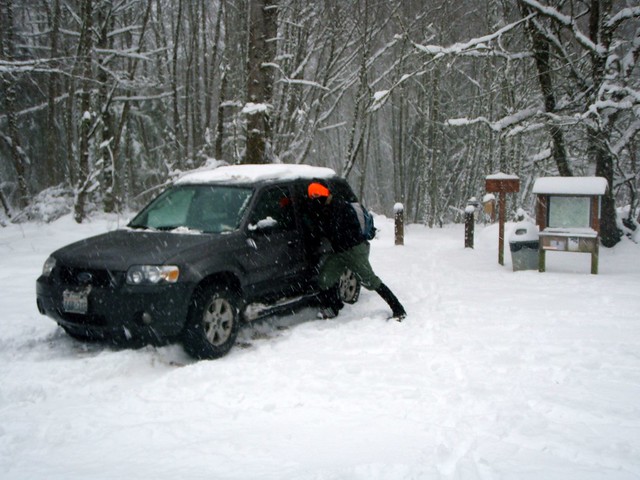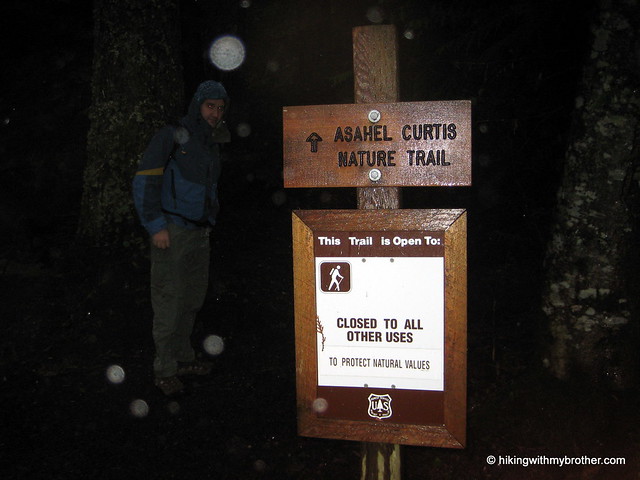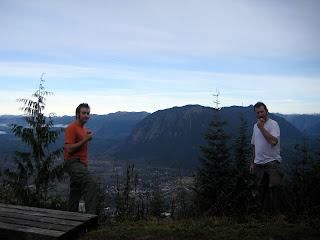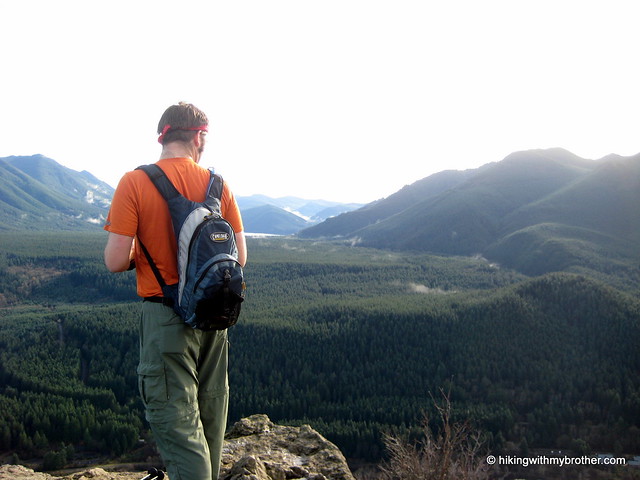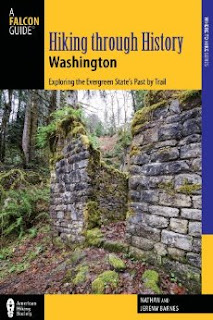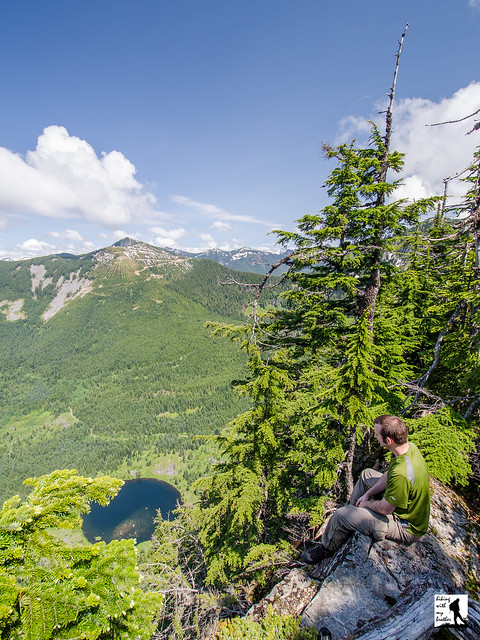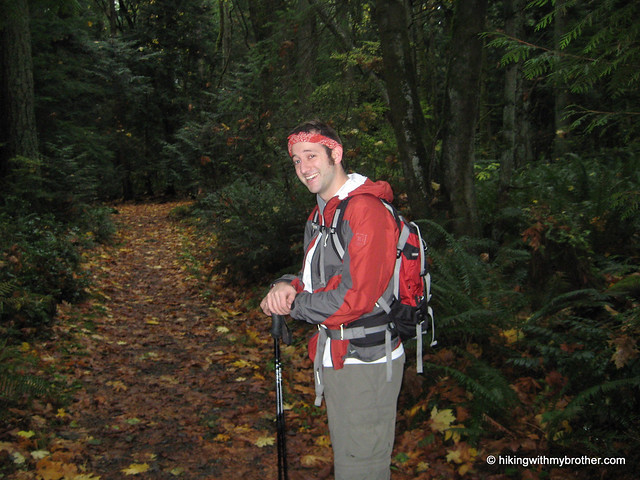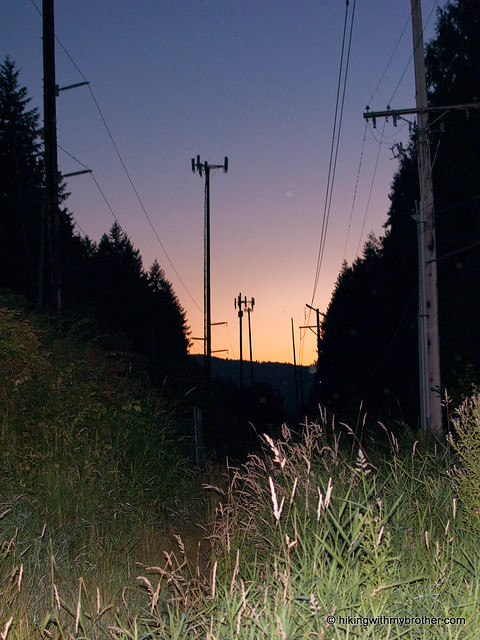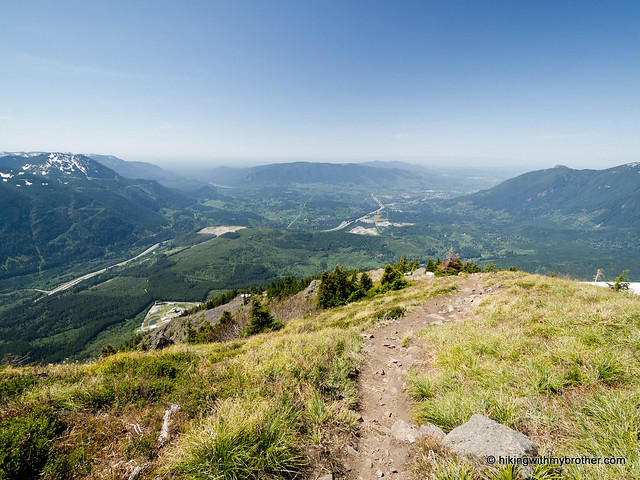Total Ascent: 900ft
Highest Point: 1880ft
Total Distance: 3.5 miles
Location: N 47° 26.0280, W 121° 44.5200
Required Permit: Discover Pass
Difficulty: Easy
 Between the holidays and navigating snowbound-Seattle for a week, Jer and I were looking for a nice short hike. Flipping through our trusty book we quickly found a winner: Cedar Butte, a three mile trek just outside of the city in familiar Rattlesnake Ledge territory. The scant page and a half devoted to describing the hike radiated ease and simplicity, so we packed our snow gear and hit the trail.
Between the holidays and navigating snowbound-Seattle for a week, Jer and I were looking for a nice short hike. Flipping through our trusty book we quickly found a winner: Cedar Butte, a three mile trek just outside of the city in familiar Rattlesnake Ledge territory. The scant page and a half devoted to describing the hike radiated ease and simplicity, so we packed our snow gear and hit the trail. This little project is all about getting to be better hikers and perhaps becoming a bit more competent. This hike is a fine example of the unexpected little lessons you learn along the way. This week’s lesson was “ensure your trail book is up to date." While Harvey Manning’s crotchety meanderings were entirely accurate, changes to the surrounding trail system made getting to the trailhead something of an adventure.
This little project is all about getting to be better hikers and perhaps becoming a bit more competent. This hike is a fine example of the unexpected little lessons you learn along the way. This week’s lesson was “ensure your trail book is up to date." While Harvey Manning’s crotchety meanderings were entirely accurate, changes to the surrounding trail system made getting to the trailhead something of an adventure.Evidently Cedar Butte now has two trailheads, in old-school traditional and newly built flavors. The path to the older trailhead has had at least six years to grow up and out, but decades of use had left enough of an impression for us to follow. Our easy hike began with more bushwhacking than we expected, compounded by the foot of snow and insistent drizzle. The path spit us out onto the John Wayne Pioneer Trail, which now runs in the old Milwaukie Railroad rail bed.
 A pleasantly brush and scramble free half-mile from here we found the signed trailhead on the right, a few hundred yards after crossing a bridge over Boxley Creek. The sign implored us to “Check the Website!”, but alas, details as to which website should be interrogated seemed to be missing, so we were forced to forge blindly ahead. Snowshoe traffic clearly outlined the trail, which was helped along by small arrows nailed to trees and stumps and an occasional signpost. The trail is fairly varied, with stretches of level ground and lazy switchbacks peppered with patches of steepness.
A pleasantly brush and scramble free half-mile from here we found the signed trailhead on the right, a few hundred yards after crossing a bridge over Boxley Creek. The sign implored us to “Check the Website!”, but alas, details as to which website should be interrogated seemed to be missing, so we were forced to forge blindly ahead. Snowshoe traffic clearly outlined the trail, which was helped along by small arrows nailed to trees and stumps and an occasional signpost. The trail is fairly varied, with stretches of level ground and lazy switchbacks peppered with patches of steepness.At the top of one of the longer hills you'll find yourself at an intersection, giving you the option to head toward the Boxley Blowout or up toward the summit. We opted, in the rain and snow, to go for the summit, although the Blowout comes highly recommended, reportedly giving a view into the lingering evidence of the 1918 reservoir failure that inundated and ultimately destroyed the fledgling town of Edgewick. Something of a scandal at the time, as apparently Seattle forged ahead on the planned Masonry Reservoir despite a number of surveys stating that the site chosen was not suitable for the project. Long story short, millions of
 cubic yards of earth and water spilled downstream, now manifested in a wide swath of deciduous trees cutting through the surrounding evergreen forest.
cubic yards of earth and water spilled downstream, now manifested in a wide swath of deciduous trees cutting through the surrounding evergreen forest.The trail is welcoming, close to the city, and pretty easy – great for a summer evening hike or an aggressive trail run. Along the way one can catch glimpses of Rattlesnake Lake, and the 1880’ summit gives limited views to Mailbox Peak, Rattlesnake Ledge and Mount Si. We’re recommending you ditch the “traditional” approach and head to the Cedar Falls Trailhead. Take I-90 to Exit 32, take a right onto 436th St, following it over the Snoqualmie River for about three miles to the Rattlesnake Recreation Area. Drive past initial signs to Rattlesnake Lake and find the signed Cedar Falls Trailhead ahead on the left. - Nathan
Print Google Directions >>





